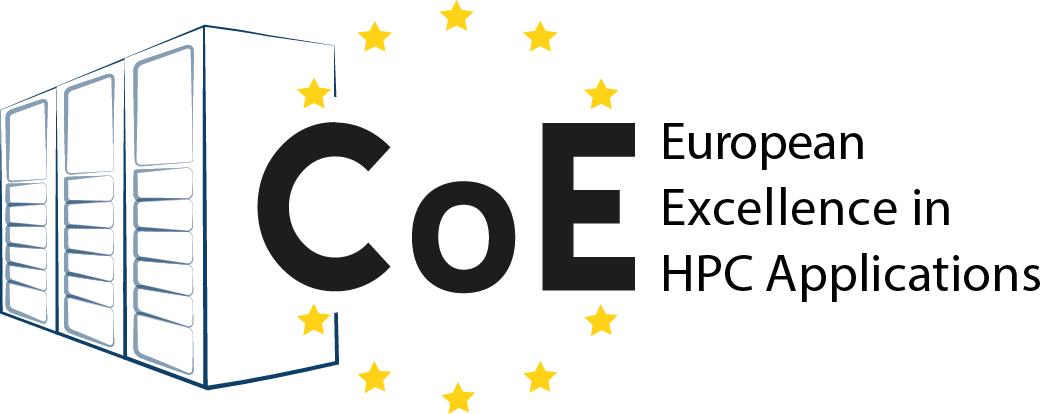- Homepage
- >
- Molecular Dynamics
E-CAM
[su_list icon=”icon:check” icon_color=”#FED538″ indent=”0″ class=””]n2p2
This package contains software that will allow you to use existing neural network potential parameterizations to predict energies and forces (with standalone tools but also in conjunction with the MD software LAMMPS). In addition it is possible to train new neural network potentials with the provided training tools.
CoE: E-CAM
Metalwalls
MetalWalls A classical molecular dynamics software dedicated to the simulation of electrochemical systems. Its main originality is the inclusion of a series of methods whichallow a constant electrical potential to be applied to the electrode materials. It also allowsthe simulation of bulk liquids or solids using the polarizable ion model and the aspherical ionmodel.MetalWallsis designed to be used on high-performance computers and it has alreadybeen employed in a number of scientific publications. It was for example used to study thecharging mechanism of supercapacitors (Merlet et al.,2012), nanoelectrowetting (Choudhuriet al.,2016) and water desalination devices (Simoncelli et al.,2018).
CoE: EoCoE
OpenPathSampling
OpenPathSampling OPS A Python library to facilitate path sampling algorithms.
OpenPathSampling (OPS) makes it easy to perform many variants of transition path sampling (TPS) and transition interface sampling (TIS), as well as other useful calculations for rare events, such as committor analysis and flux calculations. In addition, it is a powerful library to build new path sampling methods.
OPS is independent of the underlying molecular dynamics engine, and currently has support for OpenMM and Gromacs, as well as an internal engine suitable for 2D toy models.
CoE: E-CAM
CP2K
CP2K is a quantum chemistry and solid state physics software package that can perform atomistic simulations of solid state, liquid, molecular, periodic, material, crystal, and biological systems. CP2K provides a general framework for different modeling methods such as DFT using the mixed Gaussian and plane waves approaches GPW and GAPW. Supported theory levels include DFTB, LDA, GGA, MP2, RPA, semi-empirical methods (AM1, PM3, PM6, RM1, MNDO), and classical force fields (AMBER, CHARMM). CP2K can do simulations of molecular dynamics, metadynamics, Monte Carlo, Ehrenfest dynamics, vibrational analysis, core level spectroscopy, energy minimization, and transition state optimization using NEB or dimer method. CP2K is written in Fortran 2008 and can be run efficiently in parallel using a combination of multi-threading, MPI, and CUDA. It is therefore easy to give the code a try, and to make modifications as needed.
PMX
PMX is a service for users who need to do free energy calculations. Free energy calculations are extremely common in life sciences research. In molecular dynamics simulations, such as investigating how mutations affect protein function, these calculations provide insight into stability and affinity changes.
One important branch of free energy calculations involve alchemical transformations such as the mutation of amino acids, nucleic acids or ligand modifications. A challenging aspect of these calculations is the creation of associated structures and molecular topologies. pmx provides an automated framework for the introduction of amino acid mutations in proteins. Several state of the art force fields are supported that can be used in the GROMACS molecular dynamics package.
CoE: BioExcel
Gromacs
CoE: BioExcel
